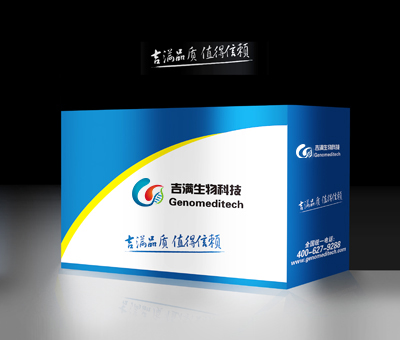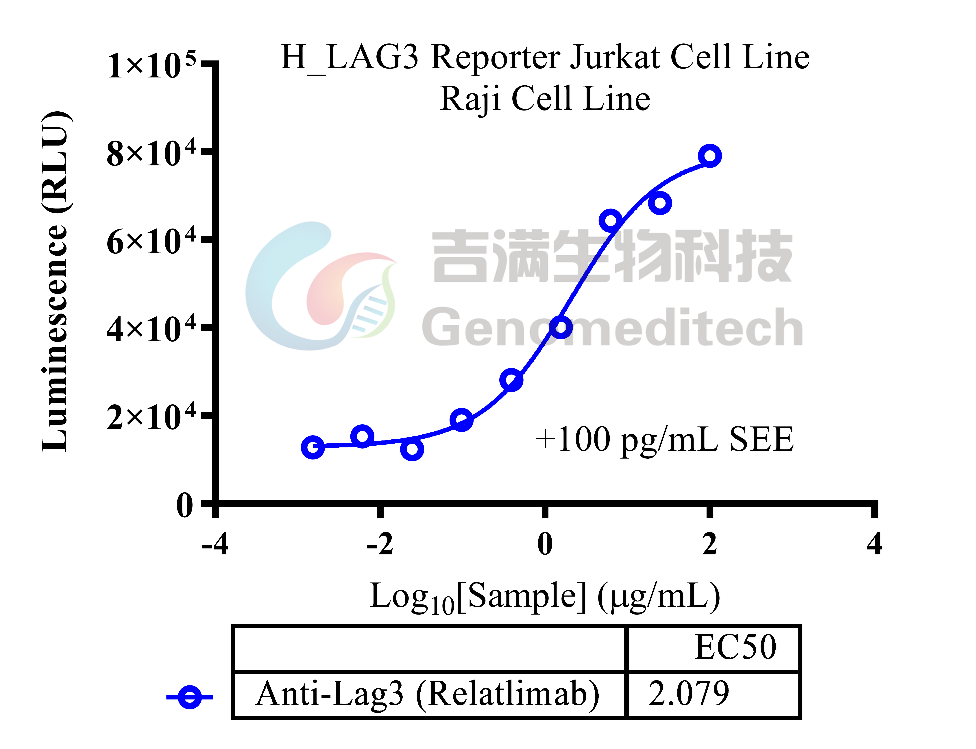产品编号:GM-51650AB
产品名称:Anti-Lag3 hIgG4 Antibody(Relatlimab)
目录价:询价

产品编号:GM-51650AB
产品名称:Anti-Lag3 hIgG4 Antibody(Relatlimab)
目录价:询价

GM-51650AB-10 10 μg
GM-51650AB-100 100 μg
GM-51650AB-1000 1mg
Species Reactivity Human
Specificity Detects human LAG3.
Source/Isotype Monoclonal human IgG4, κ
Other Names CD223
Gene ID 3902(human)
Application Binding activation: 1.5 ng/mL-100 μg/mL
Background Lymphocyte-activation gene 3, also known as LAG-3, which was discovered in 1990 and was designated CD223 (cluster of differentiation 223) after the Seventh Human Leucocyte Differentiation Antigen Workshop in 2000, is a cell surface molecule with diverse biologic effects on T cell function. The LAG3 gene contains 8 exons. The sequence data, exon/intron organization, and chromosomal localization all indicate a close relationship of LAG3 to CD4.The gene for LAG-3 lies adjacent to the gene for CD4 on human chromosome 12 (12p13) and is approximately 20% identical to the CD4 gene. The LAG3 protein, which belongs to immunoglobulin (Ig) superfamily, comprises a 503-amino acid type I transmembrane protein with four extracellular Ig-like domains, designated D1 to D4. LAG-3 is expressed on activated T cells, natural killer cells, B cells and plasmacytoid dendritic cells. LAG3's main ligand is MHC class II, to which it binds with higher affinity than CD4. The protein negatively regulates cellular proliferation, activation, and homeostasis of T cells, in a similar fashion to CTLA-4 and PD-1 and has been reported to play a role in Treg suppressive function.
Storage Store at +4℃ short term (1-2 weeks). Store at -20℃ long term
Formulation Phosphate-buffered solution, pH 7.2.

产品编号:GM-51650AB
产品名称:Anti-Lag3 hIgG4 Antibody(Relatlimab)
目录价:询价

GM-51650AB-10 10 μg
GM-51650AB-100 100 μg
GM-51650AB-1000 1mg
Species Reactivity Human
Specificity Detects human LAG3.
Source/Isotype Monoclonal human IgG4, κ
Other Names CD223
Gene ID 3902(human)
Application Binding activation: 1.5 ng/mL-100 μg/mL
Background Lymphocyte-activation gene 3, also known as LAG-3, which was discovered in 1990 and was designated CD223 (cluster of differentiation 223) after the Seventh Human Leucocyte Differentiation Antigen Workshop in 2000, is a cell surface molecule with diverse biologic effects on T cell function. The LAG3 gene contains 8 exons. The sequence data, exon/intron organization, and chromosomal localization all indicate a close relationship of LAG3 to CD4.The gene for LAG-3 lies adjacent to the gene for CD4 on human chromosome 12 (12p13) and is approximately 20% identical to the CD4 gene. The LAG3 protein, which belongs to immunoglobulin (Ig) superfamily, comprises a 503-amino acid type I transmembrane protein with four extracellular Ig-like domains, designated D1 to D4. LAG-3 is expressed on activated T cells, natural killer cells, B cells and plasmacytoid dendritic cells. LAG3's main ligand is MHC class II, to which it binds with higher affinity than CD4. The protein negatively regulates cellular proliferation, activation, and homeostasis of T cells, in a similar fashion to CTLA-4 and PD-1 and has been reported to play a role in Treg suppressive function.
Storage Store at +4℃ short term (1-2 weeks). Store at -20℃ long term
Formulation Phosphate-buffered solution, pH 7.2.
